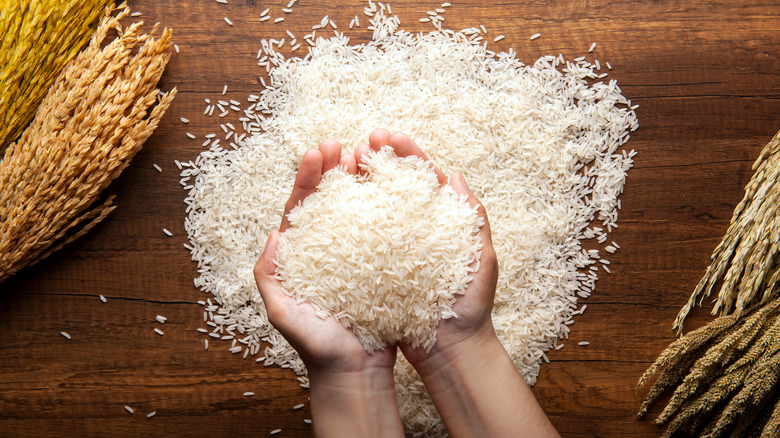New Report Sheds Light On Worsening Food Insecurity Across Asia
Food insecurity has long been a problem worldwide, but recent numbers suggest the problem is now affecting far more people than ever before. The World Food Programme's (WFP) latest report, for example, notes that nearly 350 million people in over 75 countries are currently in a state of "acute food insecurity" — meaning that their lives are in peril due to not having enough food to eat, per the United Nations Children's Fund (UNICEF). That's more than double the number of people that were affected by acute food insecurity prior to the COVID-19 pandemic, according to the WFP.
Food insecurity in a broader sense is rising in a particularly dramatic fashion in the Asia-Pacific region. The report released today by the Food and Agricultural Organization of the United Nations (FAO) observes that in 2021, over one billion people experienced food insecurity of either a moderate or severe nature in this region alone. The fifth annual version of this "SOFI" report — a joint effort between the FAO, UNICEF, WFP, and the World Health Organization (WHO) — lists many of the same exacerbating factors for food insecurity in Asia that also exist in a broader context around the globe, including COVID-19 related supply chain disruptions, rising fuel and fertilizer costs, and inflationary food prices.
But there are also factors at play that are unique to Asia, including one troubling trend that threatens major long-term consequences.
Rapid urbanization is contributing to food insecurity in Asia
According to the FAO report, urbanization in Asia is occurring so rapidly that by 2030, it is projected that 55% of the region's inhabitants will live in cities. The effects of this trend are already showing up in terms of food insecurity issues. Asia is extremely reliant on food imports, The Associated Press notes, with nearly two trillion dollars annually earmarked for this purpose. Rising food costs have made these imports even less accessible for the region's poor, particularly in urban areas, where more and more people are living. Although about 55% of regional inhabitants still earn enough to maintain a healthy diet, that leaves 45% of the population which cannot — meaning two billion people in Asia are now affected by some level of food insecurity.
Nearly 400 million people were characterized as malnourished in the Asia-Pacific region as of 2021, per FAO. Even more shocking, perhaps, was the fact that 75 million young children (ages five or less) were categorized as "stunted" as a result of poor nutrition. Stunting is a fact of life for nearly 25% of children in the region, observes The Associated Press.
Women, too, are increasingly at risk of health consequences due to food insecurity, with approximately 33% of adult women (ages 15 to 49) now suffering from anemia, per The Associated Press.

